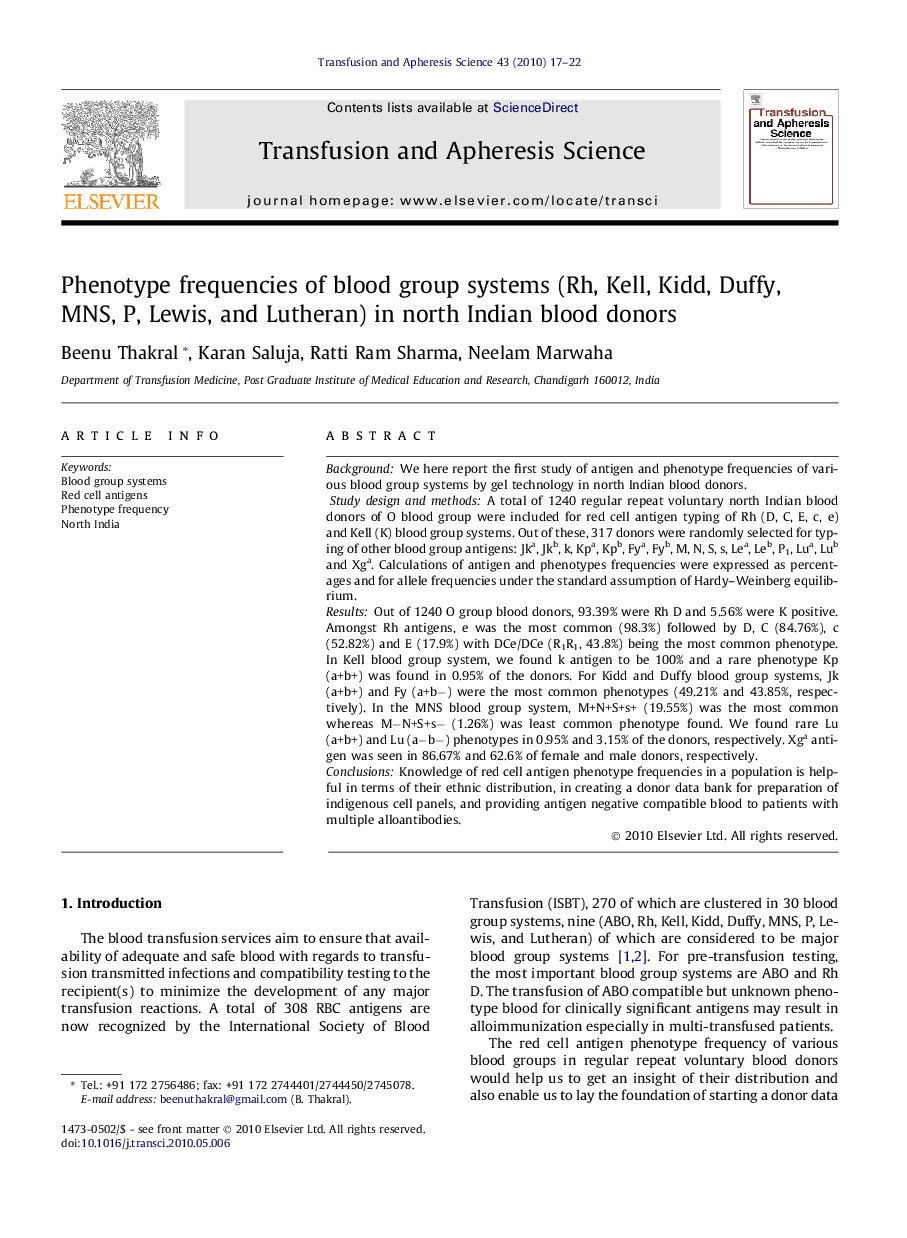| Article ID | Journal | Published Year | Pages | File Type |
|---|---|---|---|---|
| 3335843 | Transfusion and Apheresis Science | 2010 | 6 Pages |
BackgroundWe here report the first study of antigen and phenotype frequencies of various blood group systems by gel technology in north Indian blood donors.Study design and methodsA total of 1240 regular repeat voluntary north Indian blood donors of O blood group were included for red cell antigen typing of Rh (D, C, E, c, e) and Kell (K) blood group systems. Out of these, 317 donors were randomly selected for typing of other blood group antigens: Jka, Jkb, k, Kpa, Kpb, Fya, Fyb, M, N, S, s, Lea, Leb, P1, Lua, Lub and Xga. Calculations of antigen and phenotypes frequencies were expressed as percentages and for allele frequencies under the standard assumption of Hardy–Weinberg equilibrium.ResultsOut of 1240 O group blood donors, 93.39% were Rh D and 5.56% were K positive. Amongst Rh antigens, e was the most common (98.3%) followed by D, C (84.76%), c (52.82%) and E (17.9%) with DCe/DCe (R1R1, 43.8%) being the most common phenotype. In Kell blood group system, we found k antigen to be 100% and a rare phenotype Kp (a+b+) was found in 0.95% of the donors. For Kidd and Duffy blood group systems, Jk (a+b+) and Fy (a+b−) were the most common phenotypes (49.21% and 43.85%, respectively). In the MNS blood group system, M+N+S+s+ (19.55%) was the most common whereas M−N+S+s− (1.26%) was least common phenotype found. We found rare Lu (a+b+) and Lu (a−b−) phenotypes in 0.95% and 3.15% of the donors, respectively. Xga antigen was seen in 86.67% and 62.6% of female and male donors, respectively.ConclusionsKnowledge of red cell antigen phenotype frequencies in a population is helpful in terms of their ethnic distribution, in creating a donor data bank for preparation of indigenous cell panels, and providing antigen negative compatible blood to patients with multiple alloantibodies.
